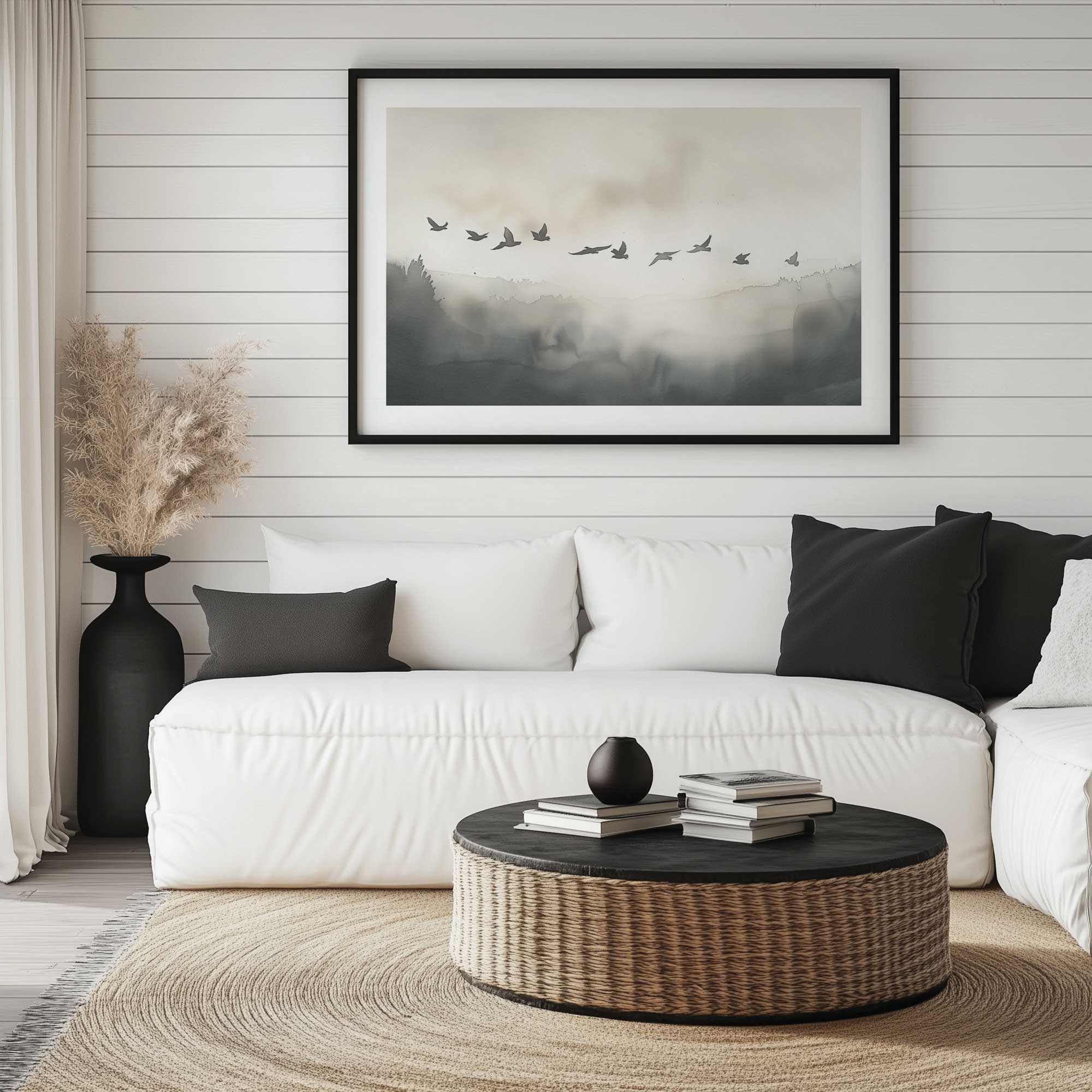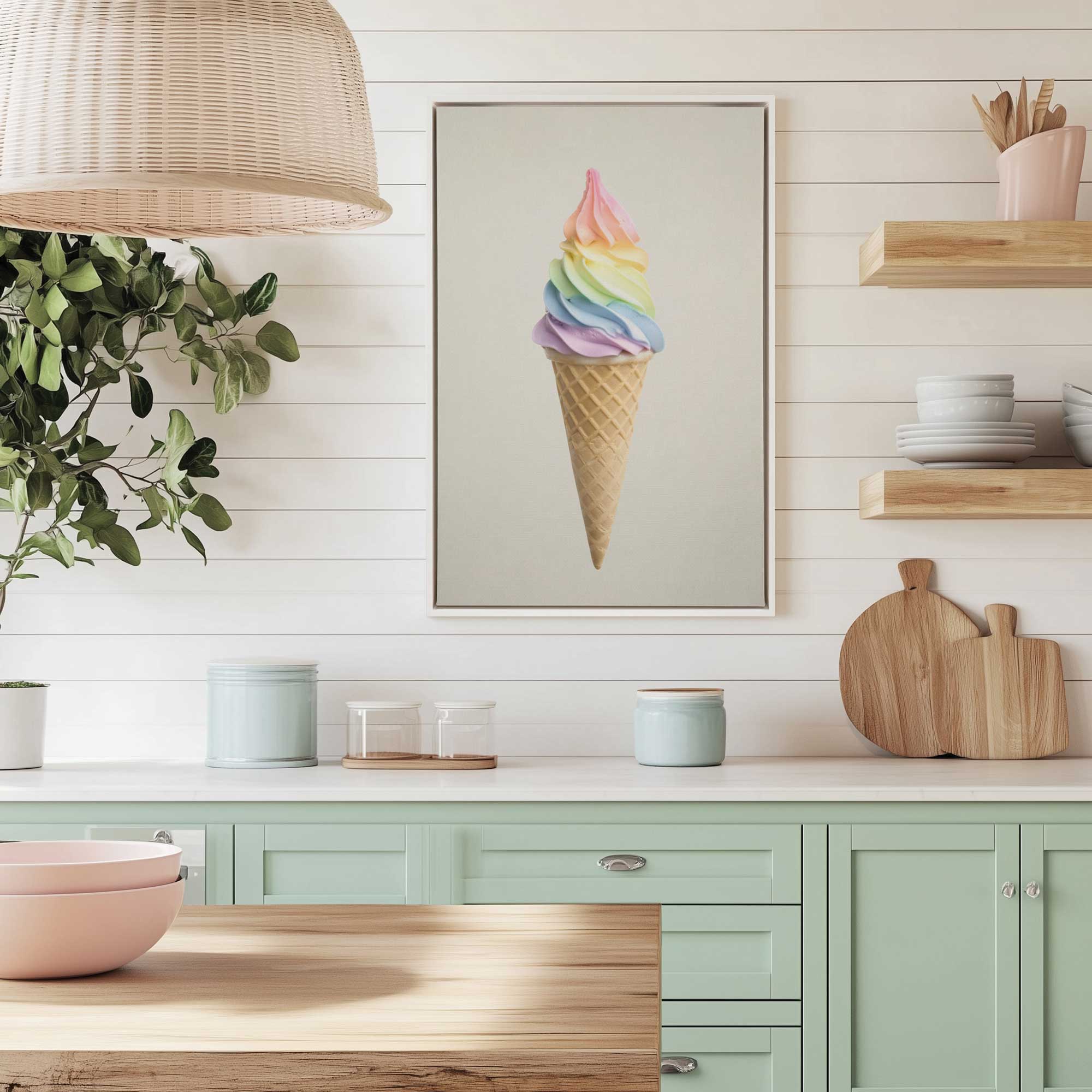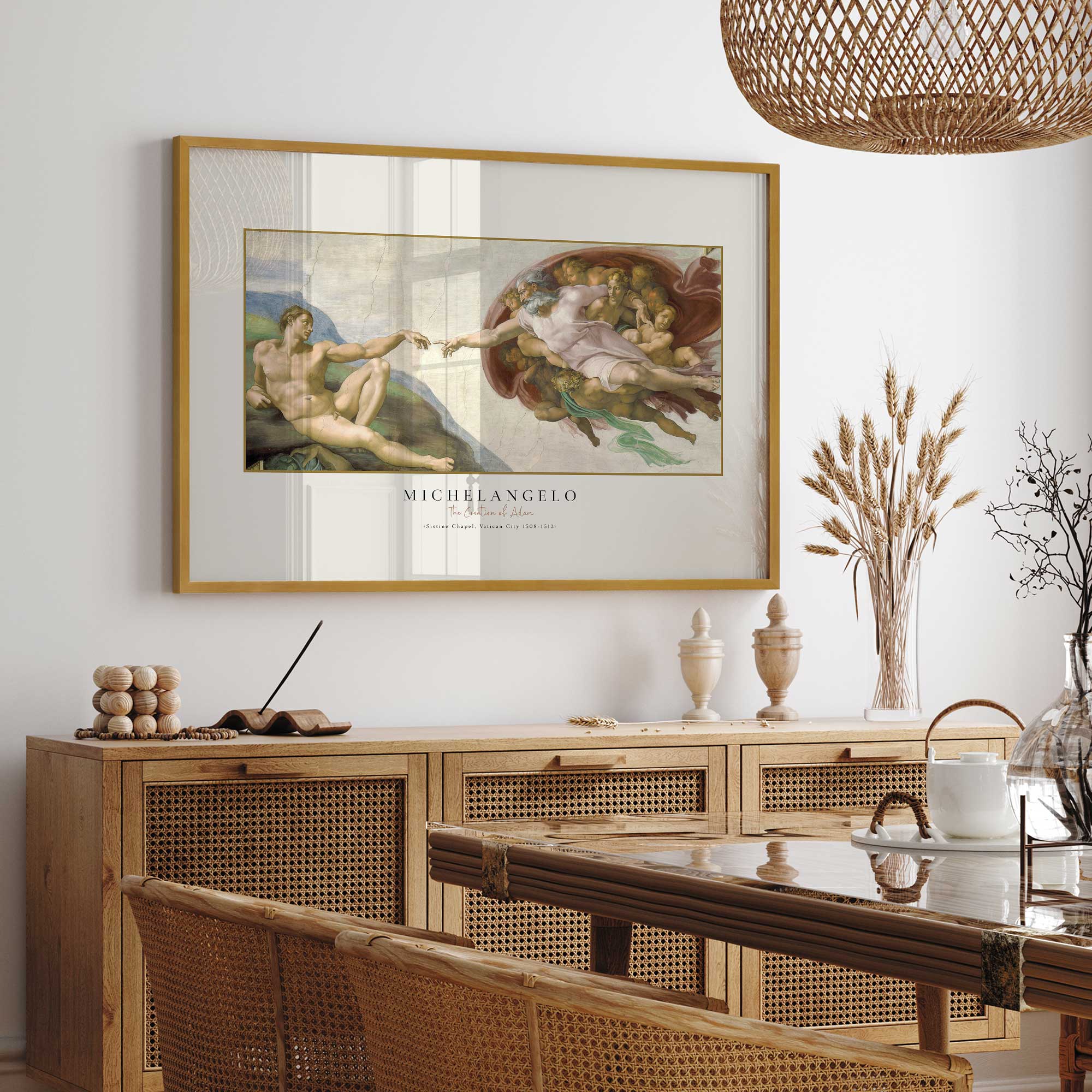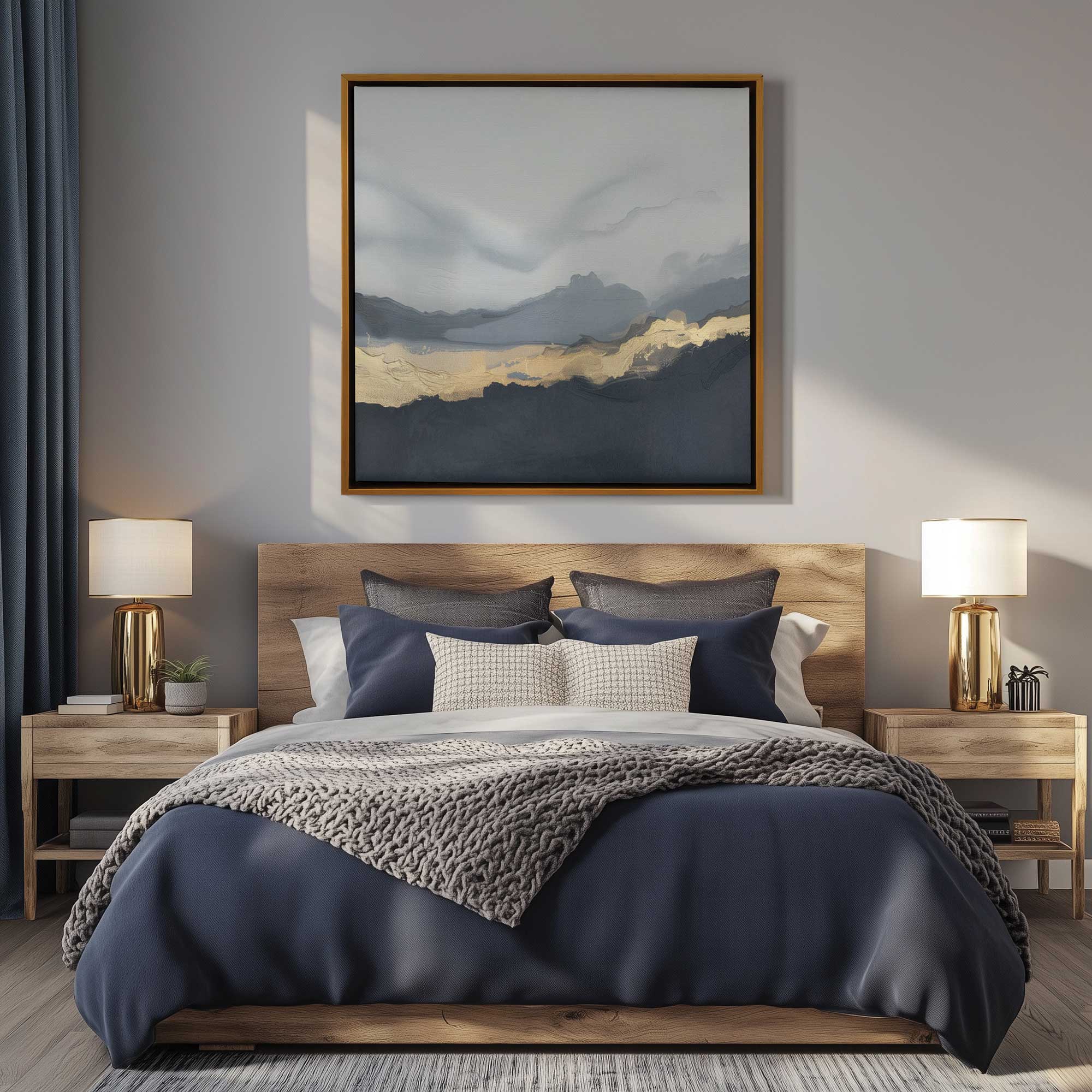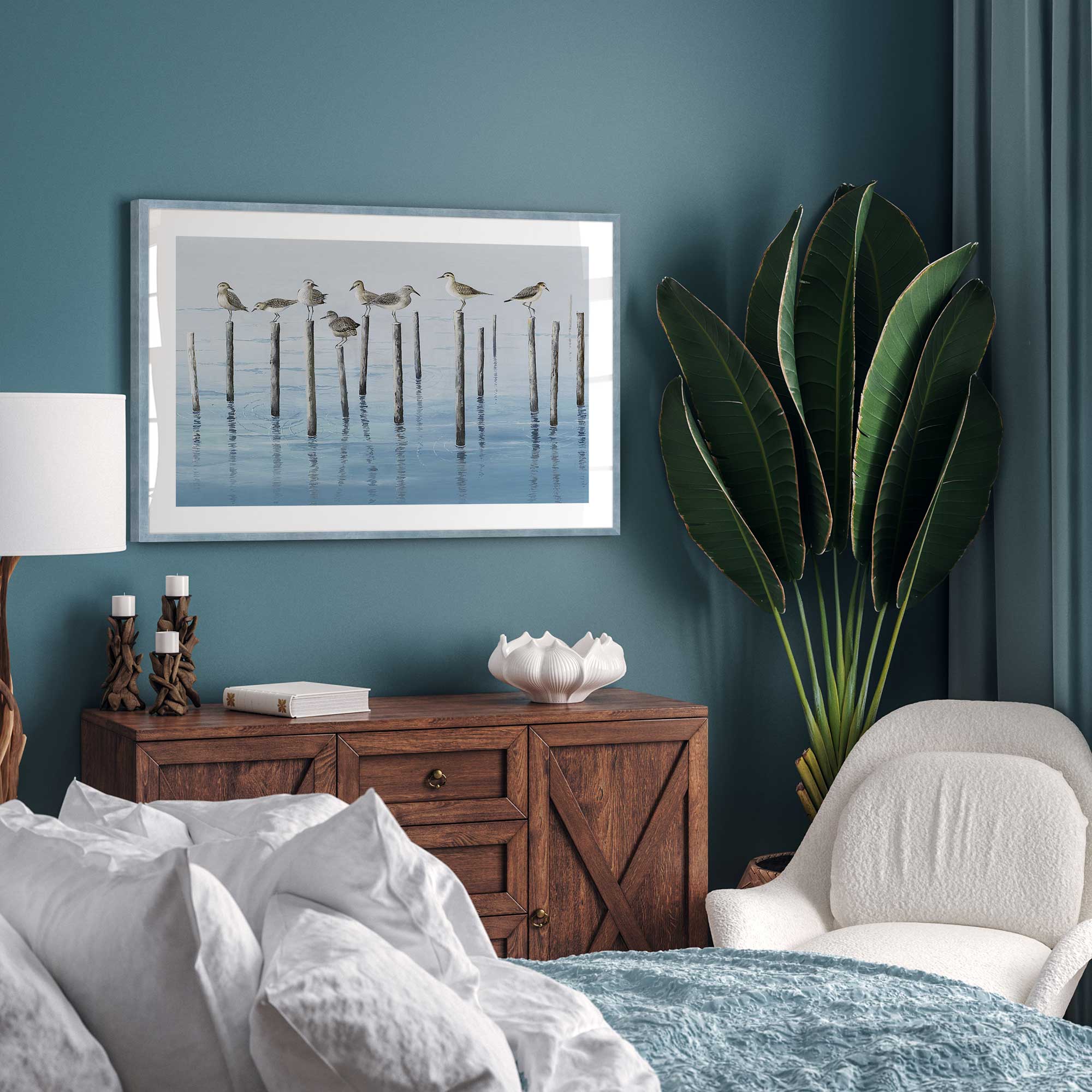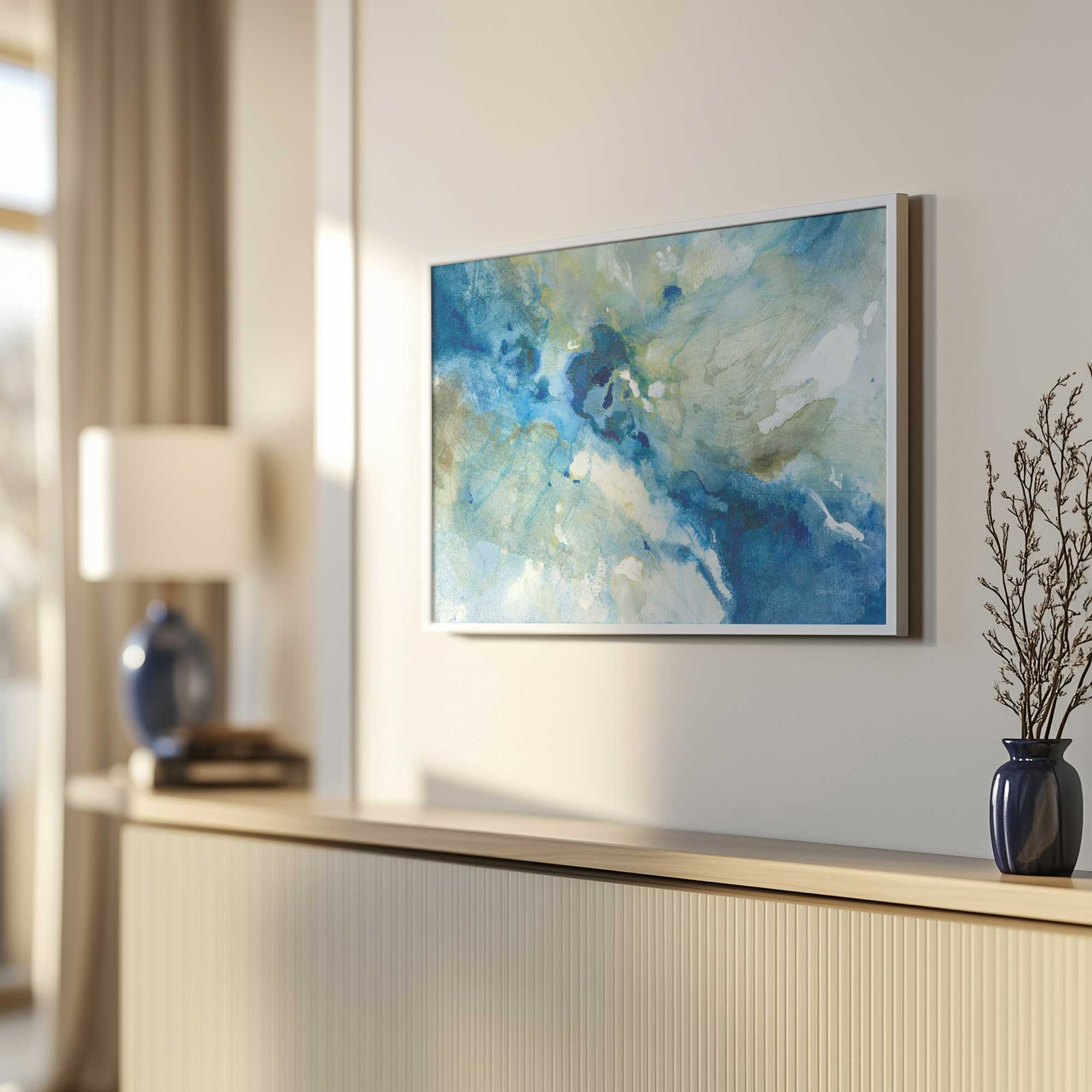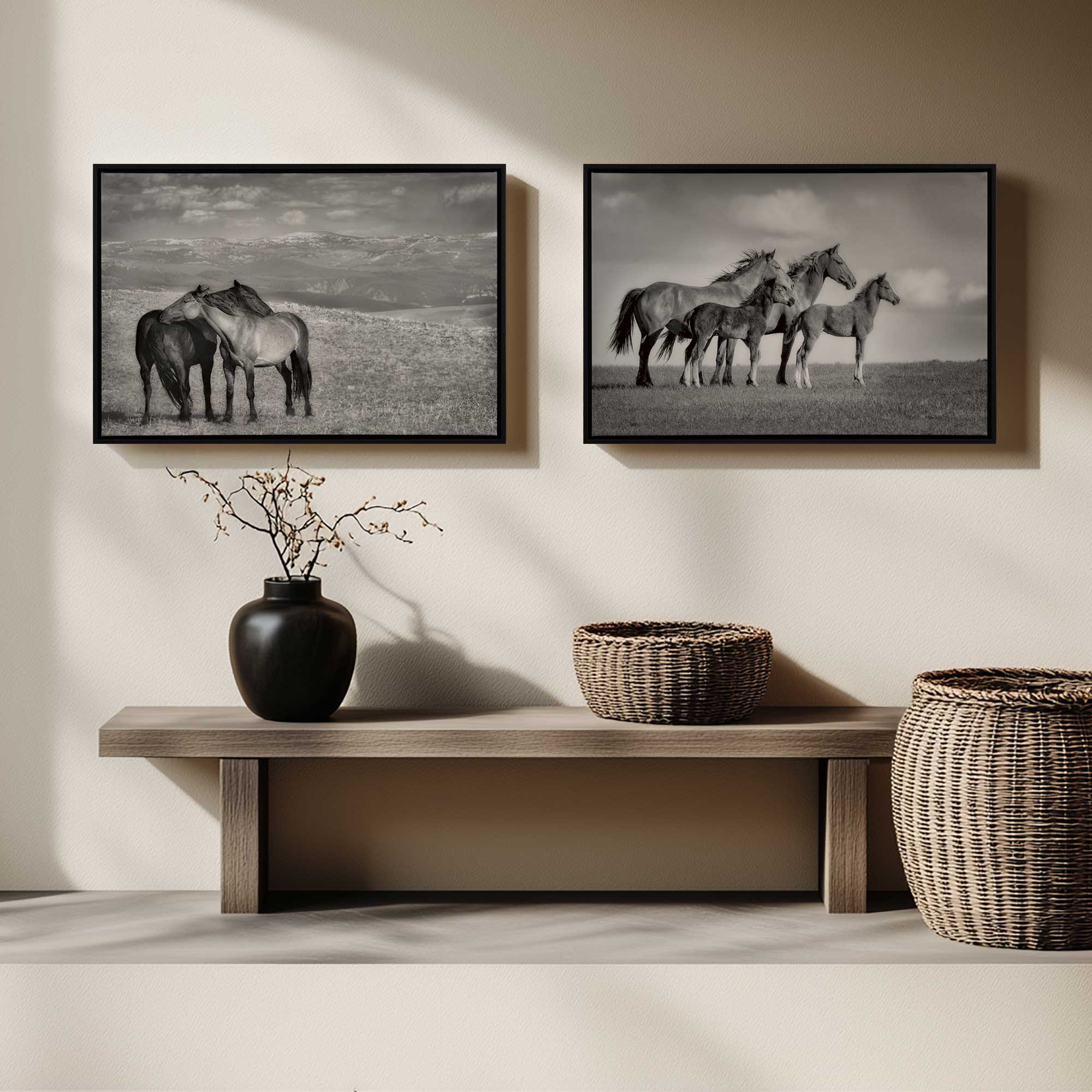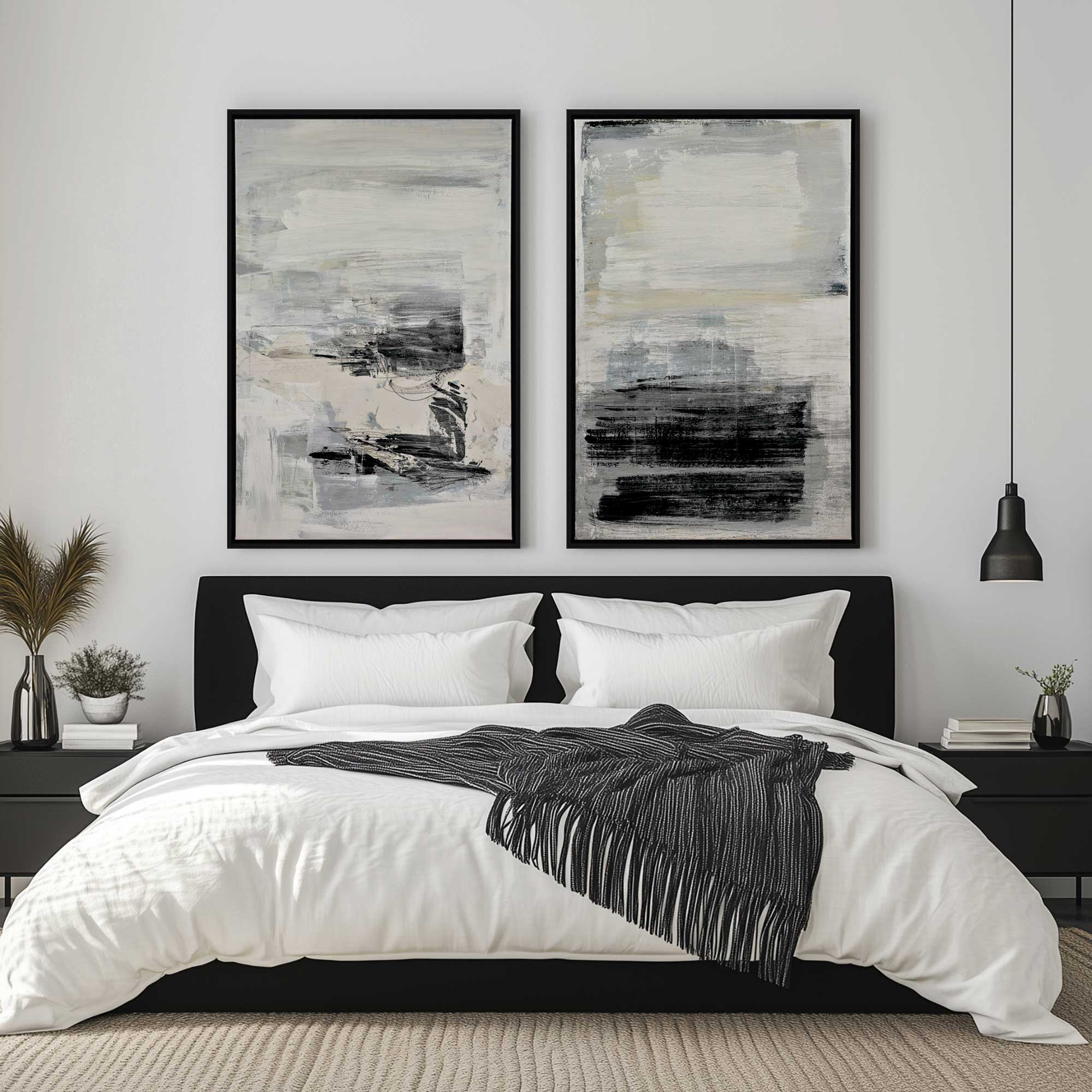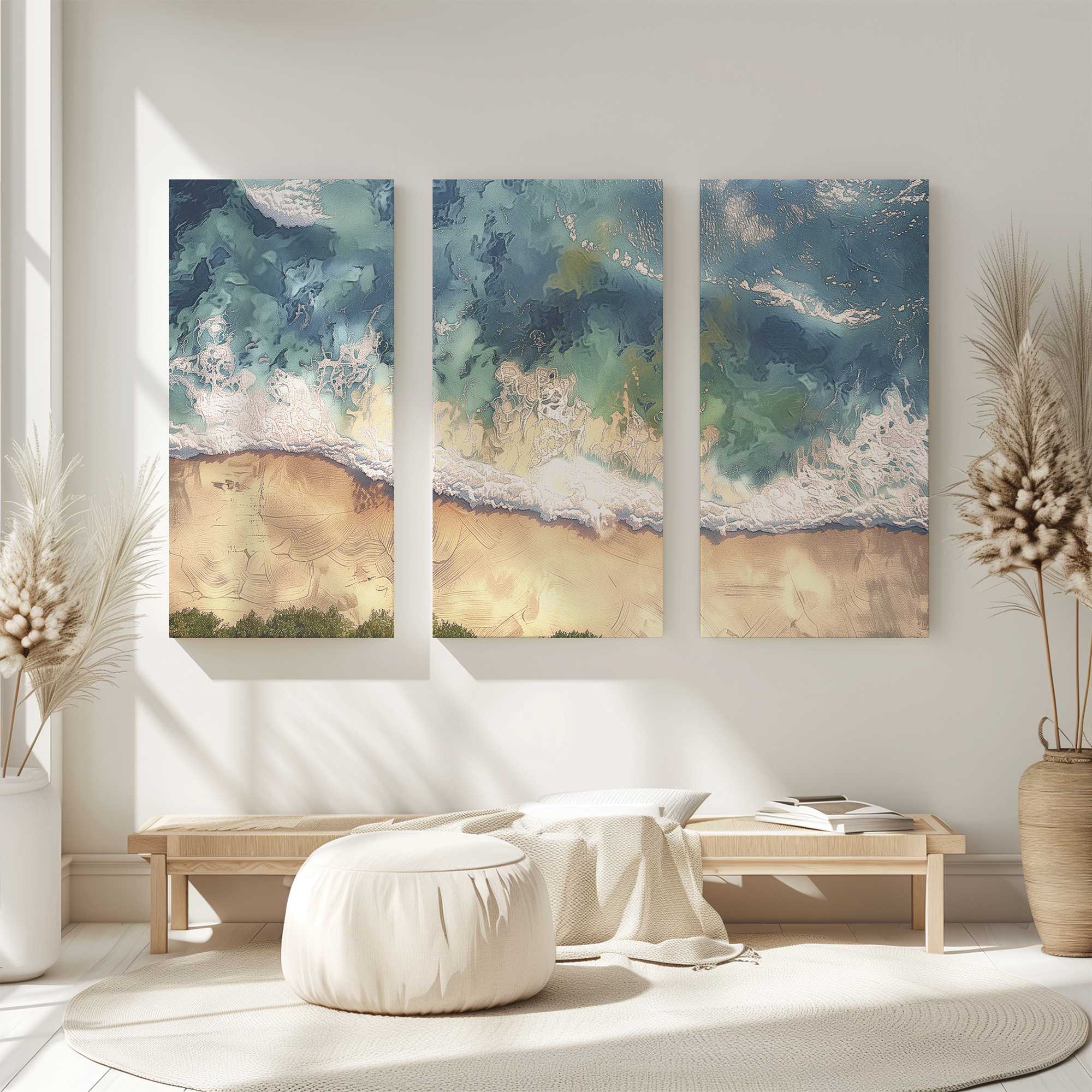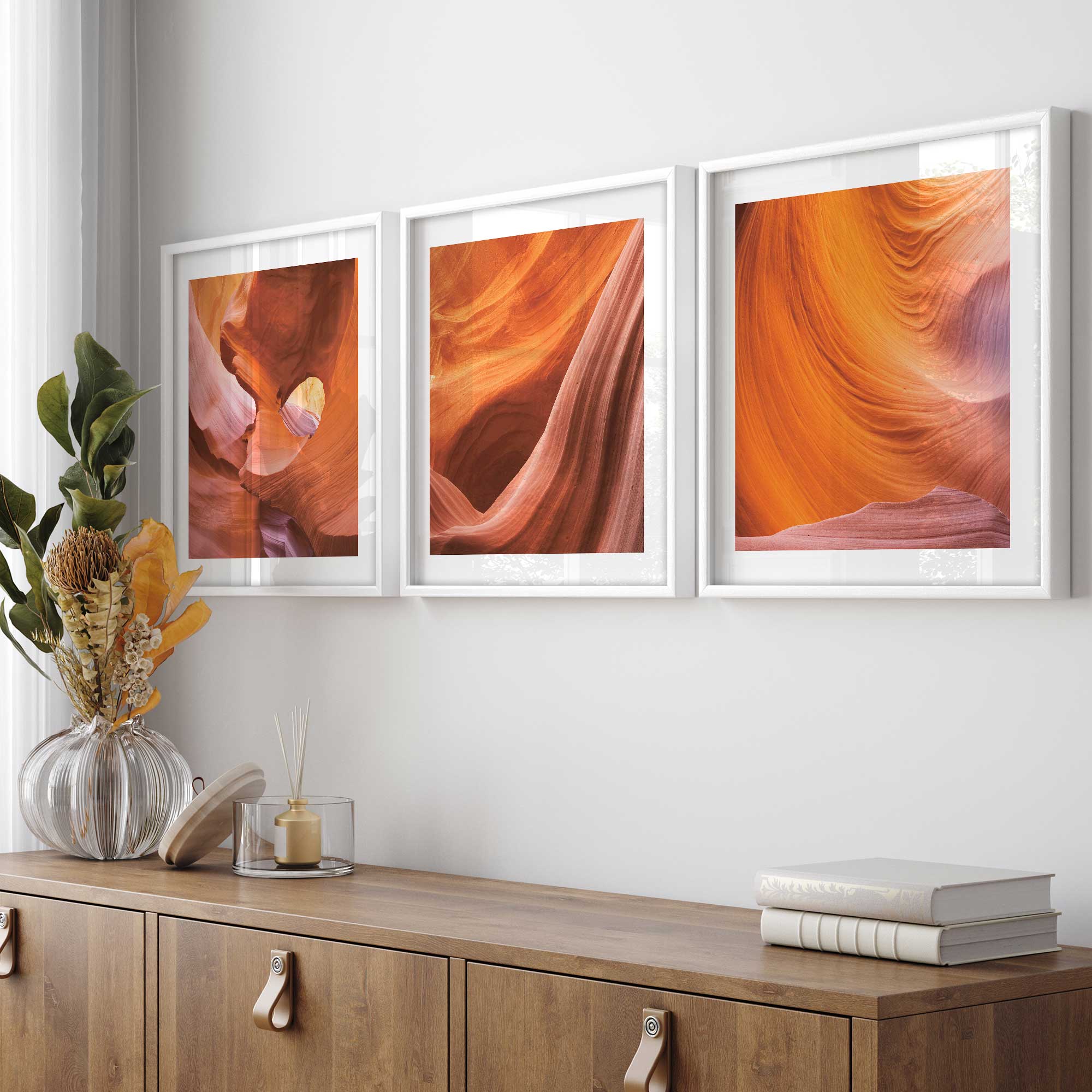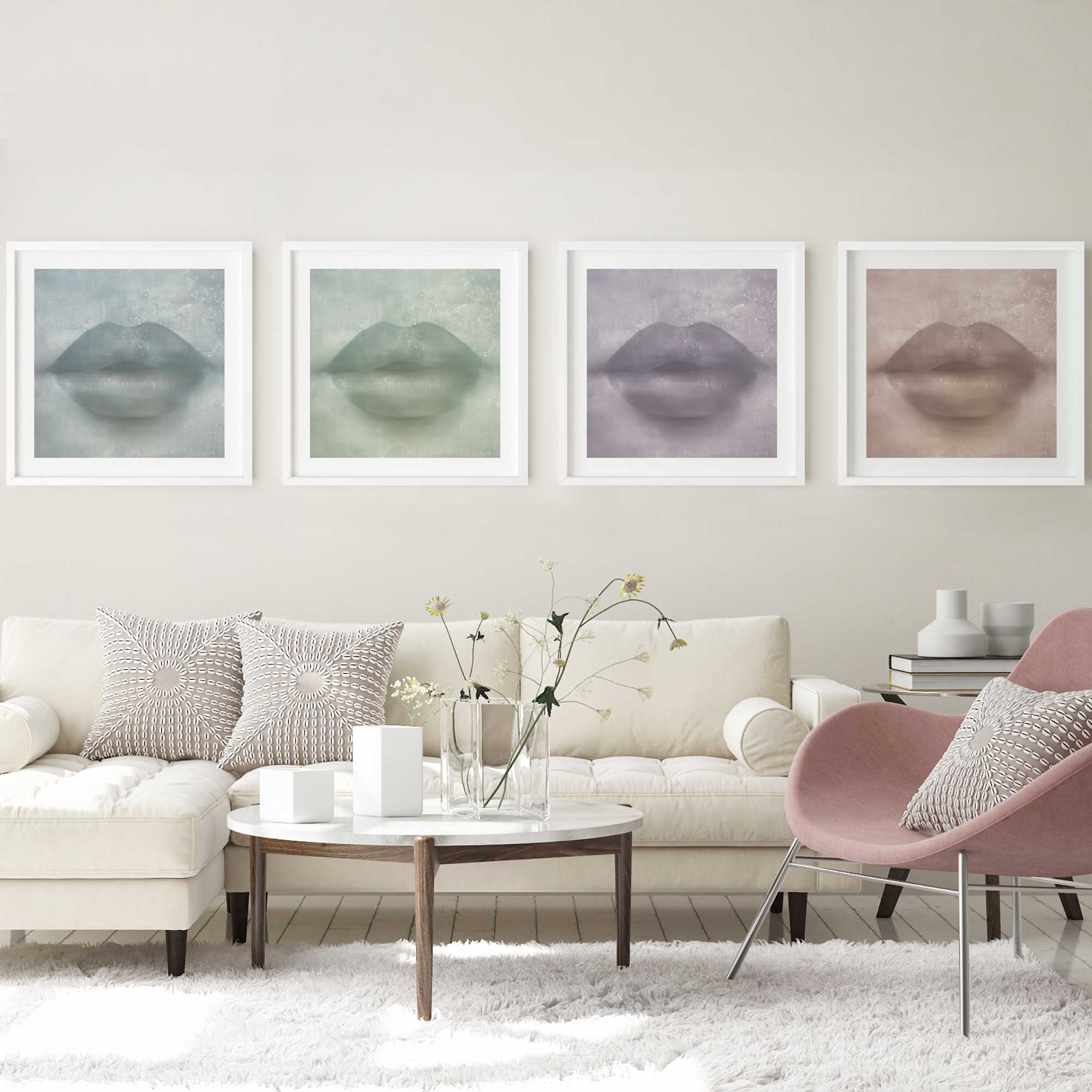Hanging wall art at the right height is essential for creating a well-balanced and visually appealing space. If artwork is placed too high, it can feel disconnected from the rest of the décor. If it’s too low, it may not have the impact you want. The right height helps integrate your artwork into the room naturally, making it feel intentional and professionally styled.
The Quick Answer: position the center of the piece at 57 to 60 inches from the floor.
This is approximately eye level for most people. However, the best height can vary based on where the art is placed and the furniture around it. Below, we’ll cover how to adjust art height for different room and layouts, included art sets to ensure you have a cohesive look throughout your home.
The Ideal Height for Hanging Wall Art in Different Rooms
While the 57 to 60-inch rule is a great general guideline, the best height for artwork can vary depending on the room and its function. In some spaces, artwork should be positioned slightly lower or higher to complement furniture, maintain balance, and create a cohesive design. Below, we’ll break down the ideal height for hanging wall art in different rooms and how to adjust placement for the best visual effect.
How High to Hang Art in the Living Room
In the living room, artwork is often placed above a sofa or console table. To create a harmonious look:
- Leave 6 to 8 inches of space between the bottom of the artwork and the top of the furniture. This keeps the artwork visually connected to the seating area rather than floating too high on the wall.
- Follow the 57–60 inch rule when hanging art on a blank wall without furniture beneath it.
- Consider the width of your furniture: Artwork should be at least two-thirds the width of the sofa to maintain balance. If your piece is too small, consider grouping multiple artworks to fill the space.
- For gallery walls above a sofa, keep the bottom row aligned 6 to 8 inches above the sofa, and build upward, ensuring the overall arrangement follows the eye-level rule.
How High to Hang Art in the Dining Room
Dining rooms have a unique challenge—people spend most of their time sitting. Because of this, artwork should be positioned slightly lower than in other rooms to align better with the seated perspective.
- The center of the artwork should be closer to 57 inches from the floor.
- If hanging art above a buffet or sideboard, leave 4 to 6 inches of space between the furniture and the artwork.
- Large pieces work well in dining rooms, but if using multiple smaller pieces, arrange them in a balanced way, keeping consistent spacing between frames.
How High to Hang Art in Bedrooms
In bedrooms, artwork is commonly hung above beds, dressers, or nightstands. Since beds and headboards take up significant visual space, art placement should feel cohesive with the furniture.
- When hanging art above a headboard, position it 6 to 10 inches above the top to maintain a strong connection to the bed.
- The artwork should not extend wider than the bed itself. A good rule of thumb is for art to be about two-thirds the width of the bed.
- If you have a high headboard, consider placing artwork higher than usual or choosing a vertical piece to create height in the room.
- For a symmetrical look, try hanging two framed pieces above nightstands on either side of the bed. Keep them at eye level when standing and spaced evenly from the bed and furniture.
How High to Hang Art in Hallways and Entryways
Hallways and entryways typically have blank walls that benefit from well-placed artwork. Since people are standing and walking past, artwork should always be positioned at standard eye level (57 to 60 inches to the center).
- If hanging multiple pieces in a hallway, keep a consistent center height for all artworks to create a uniform look.
- In narrow spaces, consider a vertical arrangement of two or three pieces stacked 3 to 5 inches apart to add visual interest without overwhelming the space.
- If you have a long hallway, try a gallery-style arrangement with evenly spaced pieces to create a flowing design.
Arranging Sets of Artwork
Once you’ve determined the best height for your artwork, it’s important to space multiple pieces properly. Whether you’re working with a set of two, four, or six, these spacing guidelines will help create a cohesive and intentional look.
How High to Hang a Set of 2 Art Pieces
- Side by Side: Place them 2 to 4 inches apart, with the center of each piece at 57–60 inches from the floor. This works well above sofas, beds, and console tables.
- Stacked Vertically: Keep the center of the overall arrangement at 57 inches from the floor, with 3 to 5 inches between each frame. This style is ideal for narrow spaces like entryways or between windows.
- Offset Arrangement: Hang one piece slightly higher than the other, overlapping their visual space while keeping 2 to 6 inches of distance between them. This asymmetrical look works well in modern or relaxed interiors, adding movement and visual interest.
How High to Hang a Set of 3 Art Pieces
- In a Row (Horizontal Layout): Keep 2 to 4 inches between each piece, aligning their centers at 57–60 inches from the floor. This works well above sofas, dining tables, and long console tables.
- Stacked Vertically: Space the pieces 3 to 5 inches apart, centering the entire arrangement at about 57 inches from the floor. This style is great for narrow walls, stairwells, or between windows.
How High to Hang a Set of 4 Art Pieces
- Grid Layout (2x2 Square): Keep frames 2 to 4 inches apart, aligning the entire grid so that its center is at 57 inches from the floor. This arrangement looks great above buffets, beds, or as a feature in a hallway.
- Linear (All in a Row): Works well above long furniture, such as a sofa or dining table. Position the bottom edge of the frames 6 to 8 inches above furniture, spacing them evenly.
Perfect Your Art Placement
Hanging artwork at the right height is a simple way to elevate the design of any room. By following the 57–60 inch rule, adjusting for furniture placement, and using proper spacing in multi-piece arrangements, you can create a polished and professional-looking display. And if you happen to be looking for something new, check out our collection of New Art. Happy Decorating!



